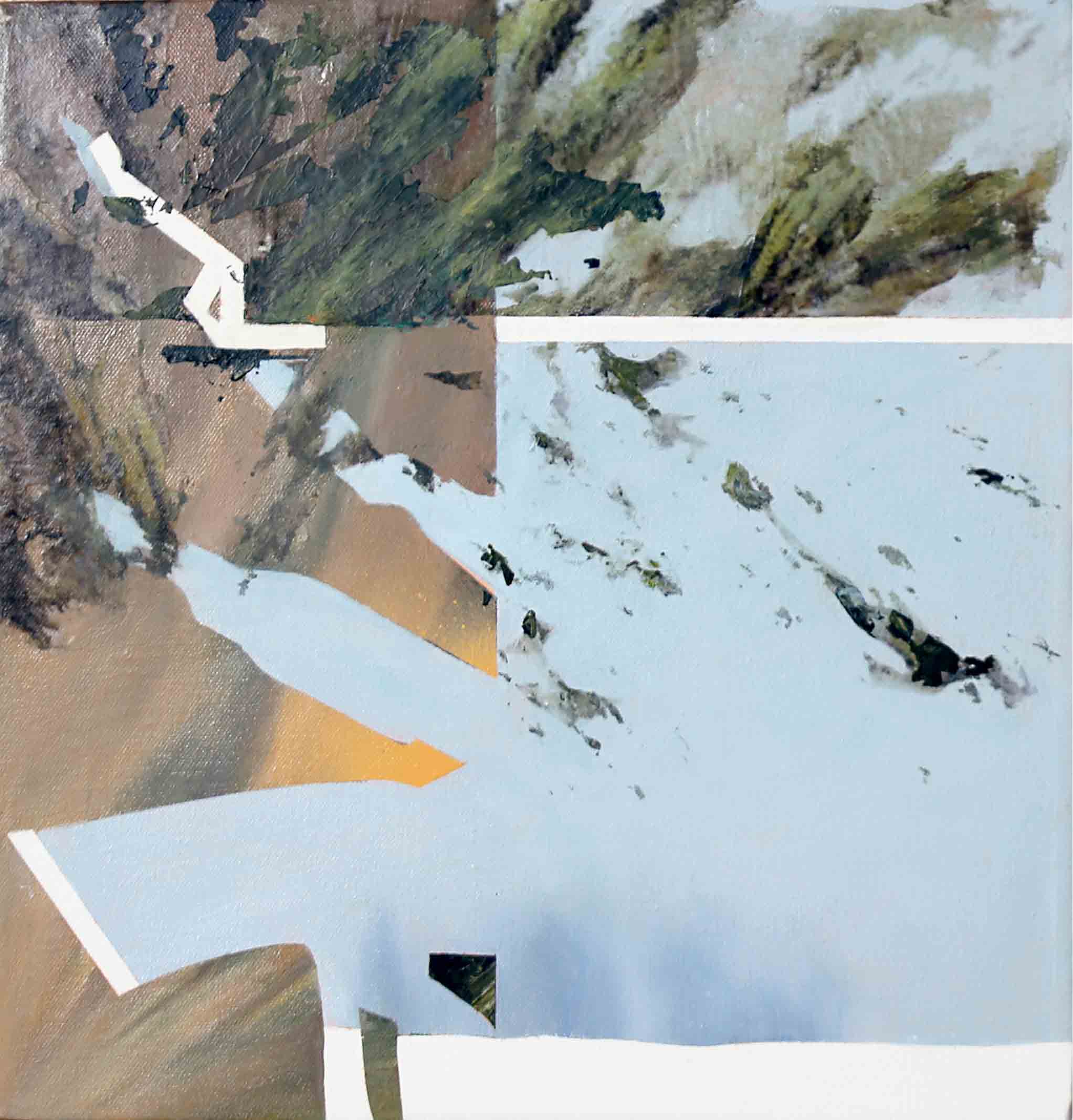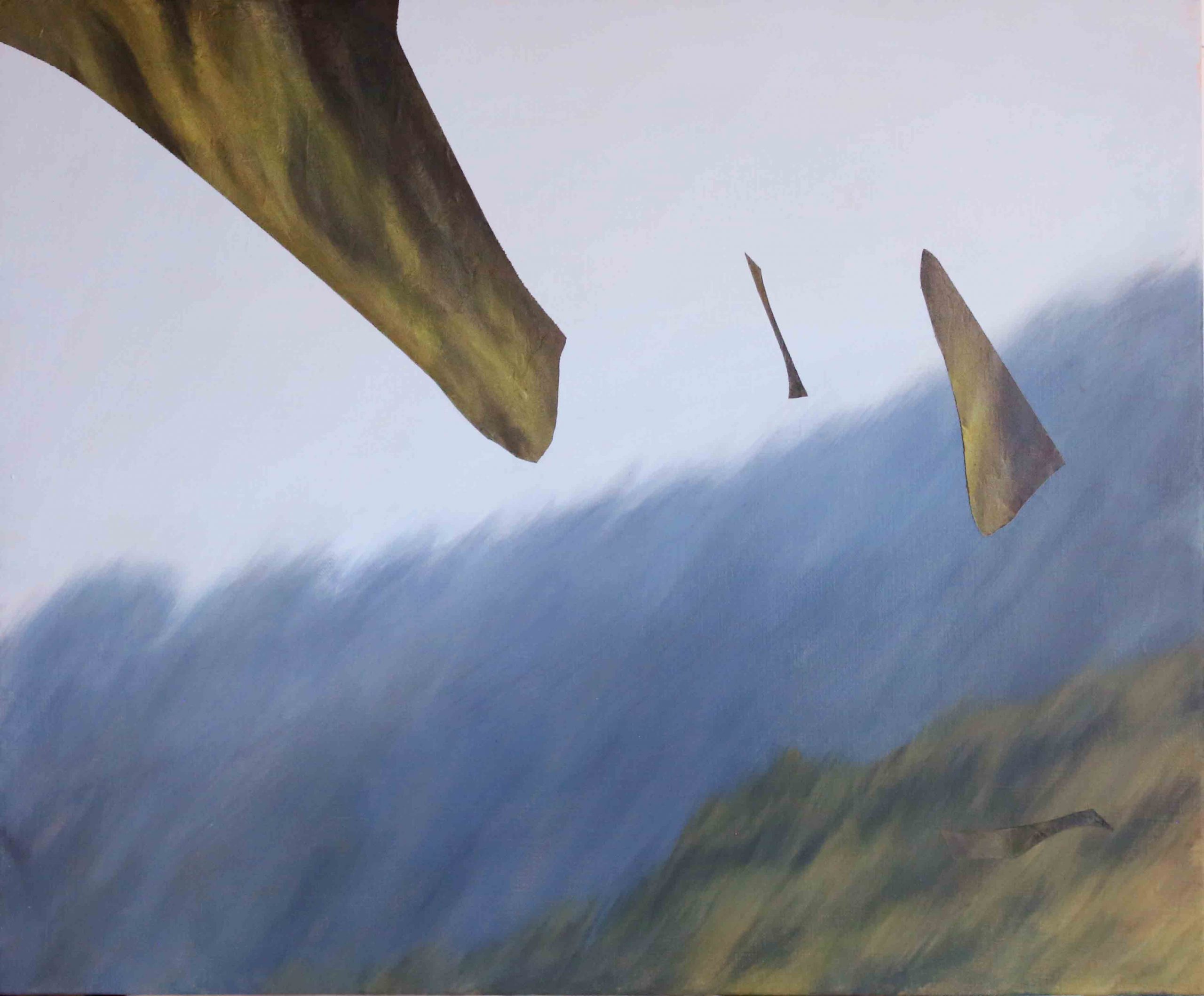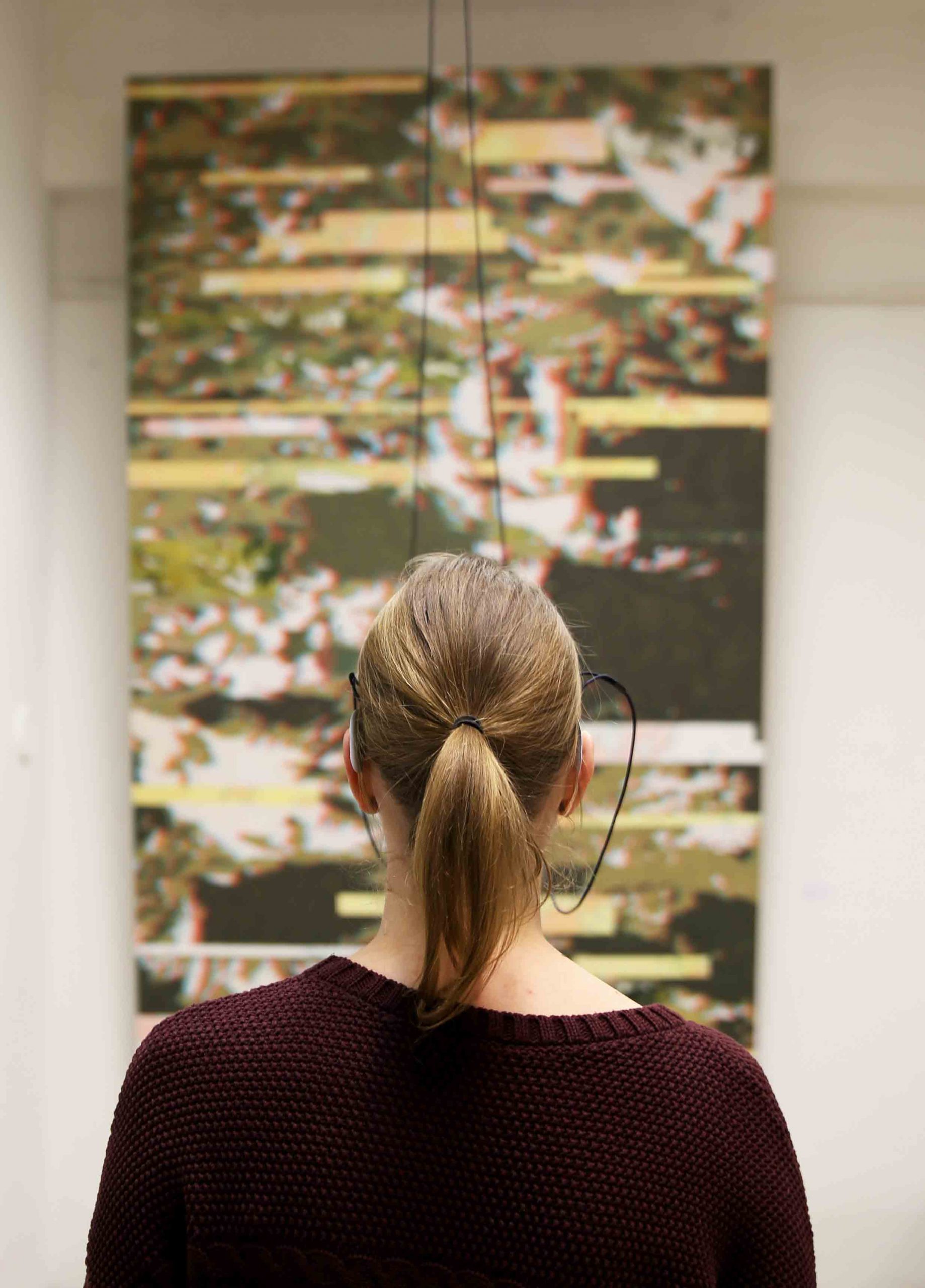Myopia
In the new series of large format paintings, the author continues developing the motif of the landscape and its significance based on the perception and recognition of rapid environmental changes, themselves a product of human presence and engagement in the world.
Within the works, consideration of these changes originates from the image of a variably manifesting rock that questions our perception of nature and our relationship to it.
Through changeable painterly interpretations of the chosen motif, the author delves into the aesthetic expanse of nature apprehension and explores how our view affects the portrayal of the observed. Is art a paragon for our sagacity of nature, or is it vice-versa?




Uncut
Through the paintings of the UNCUT series, painter and visual artist Monika Slemc further engages in her existent subject exploration of the relationship between society and nature, simultaneously questioning the status of the artwork and its context.
The series consists of small format works converging on the motif of a stone, painted levitating above abstract terrain. Refined texturization and lustre transform the stone into a glorified object with an accentuated aesthetic value. The series’ title already associates it with clean, unabraded gems of expense and symbolism. The gleaming surface and deliberate textures elevate the status of the common object into a valuable, concurrently projecting a sense of spatiality and three-dimensionality. The added shadow reduces the object’s natural mass and weight so that despite its perceived voluminosity, it appears levitational and imaginary within the composition.
The series’ works allow for broad contexts of apprehension and contextualisation of the image on both visual and content levels. Familiar, common, and almost banal objects from nature undergo artistic refinement and become the central motif of artworks that exceed their own aesthetic value. The elevation of segments from commonplace reality through exaltation of the natural element also intervenes in defining the status of an artwork that does not develop its content on visual presentation alone, but also strives to establish a relationship with the varying parameters comprising the valuation of art.


Y.F.Y.















JOMO. FOMO. YOLO.
JOMO is an acronym for Joy of Missing Out and describes the pleasure of taking a break from social activity – especially social media – to enjoy personal time. The opposite acronym is FOMO- Fear OF Missing Out. YOLO is an acronym for You Only Live Once.
The actuality of the theme, the way of presentation and a constant general attention to the events on the art scene are some of the key criteria for success. But they also represent pressure. It creates an overload, which can even stop the creative process at a certain point. FOMO! But if we push it to the side, a completely different world opens up. JOMO! The newly created series of paintings shows precisely this feeling, the question of how to avoid worrying about stylistic and thematic position, institutional requirements and contexts, but simply enjoy the act of painting at a given moment, because you can. YOLO! The pictures in the series are different regarding the form, but have the same basis for the content and its role is crucial. The image was made with a smartphone, which almost always keeps track of us. It enables us to instantly record a specific moment that can be shared on social networks to prove to everyone that we have really experienced it. YOLO! With simple computer manipulations of a selected landscape image, I interweave the pictures with the technology of my time. By combining the painting tradition and the various possibilities brought about by our technology, I create my images on the canvas. I am not hiding behind “style”, but am sincerely searching for it in front of everyone’s eyes. # Nofilter. The series of paintings does not directly reflect the nature, but the image-photography. Is it because of this that the painted image is less sincere, less genuine? Well, exactly those images lead us to a comfortable couch at home. They have become our reality, which we trust more than the reality outside. JOMO!
Blend In
Many artists perceived nature as the main inspiration for artistic creation and the possibility for escaping from the pace dictated by the mainstream society, following the increasing progress. That is exactly what I see and look for in nature myself. Walking in the mountains offers me a break from the overcrowded everyday life and awards me with unpredictable views on steep peaks and views from them.
Image depicts a mountain top on the canvas, which in reality cannot be seen without a sufficient distance or magnification by the camera. Because of the motion and reduction of the image, the picture itself creates a feeling of motion and does not allow the viewer a relaxing and clear view. In front of the painting hangs a robe (which I used for many years at work) and with its presence ironically draws attention to the absence of a human body.
The work is thus an interpretation of my perception and the feeling of the state of the relationship that we establish with nature. It is about losing connection with it, a sense of alienation caused by modern technology. This does not deviate us just from nature, but also from ourselves. Ironically, the picture invites viewers to pull their mobile phones out of their pockets and photograph a friend in front of the robe. They will be, even if only on the screen of a smartphone, blended with this powerful image of nature, at least until the illusion falls apart.
Ruins
Technology and the whole modern production, in addition to the enormous progress and ever-increasing technological capabilities, cause, among other things, also destruction. The ruin is thus established as a new work of art that emerges between the forces of the contradictions between nature and human. Today nature is not being perceived as subdued to humans anymore, but in the opposite way. The human world becomes the material basis for nature, which, with its decay, excites the sublime moment and the fascination for the ruins.
In my work, I do not merely reflect the visual images of ruins, but I try to understand the logic behind their formation, transferring it into my work. I am building a painting like a ruin by separating the already existing images, which I later combine and finally transform into a new image. The viewer is constantly losing control over the image as the ruin evades our attempt to control nature. Can a painting nowadays be understood as a ruin of tradition,resisting the modern media of today’s modern technology?
No Title
One of the main motives, which is an endless source of inspiration for me, is nature. My main interest is in the relationship between nature and humanity in a technologically progressive age. Despite technological advances, humans are not able to control nature and are very small compared to it, whether we admit it or not. I wanted to recreate that feeling in a painting to make the viewer experience exactly that – the unsubdued nature and the feeling of smallness. Therefore, I turned my large format painting upside down and leaned it towards the viewer. In this way, the painting is hanging and causing a feeling of falling. Due to the painted 3D and glitch effects, the viewer was never able to see clearly the image (not even with 3D glasses). Thus, the viewer has lost control over the image again and again.
























